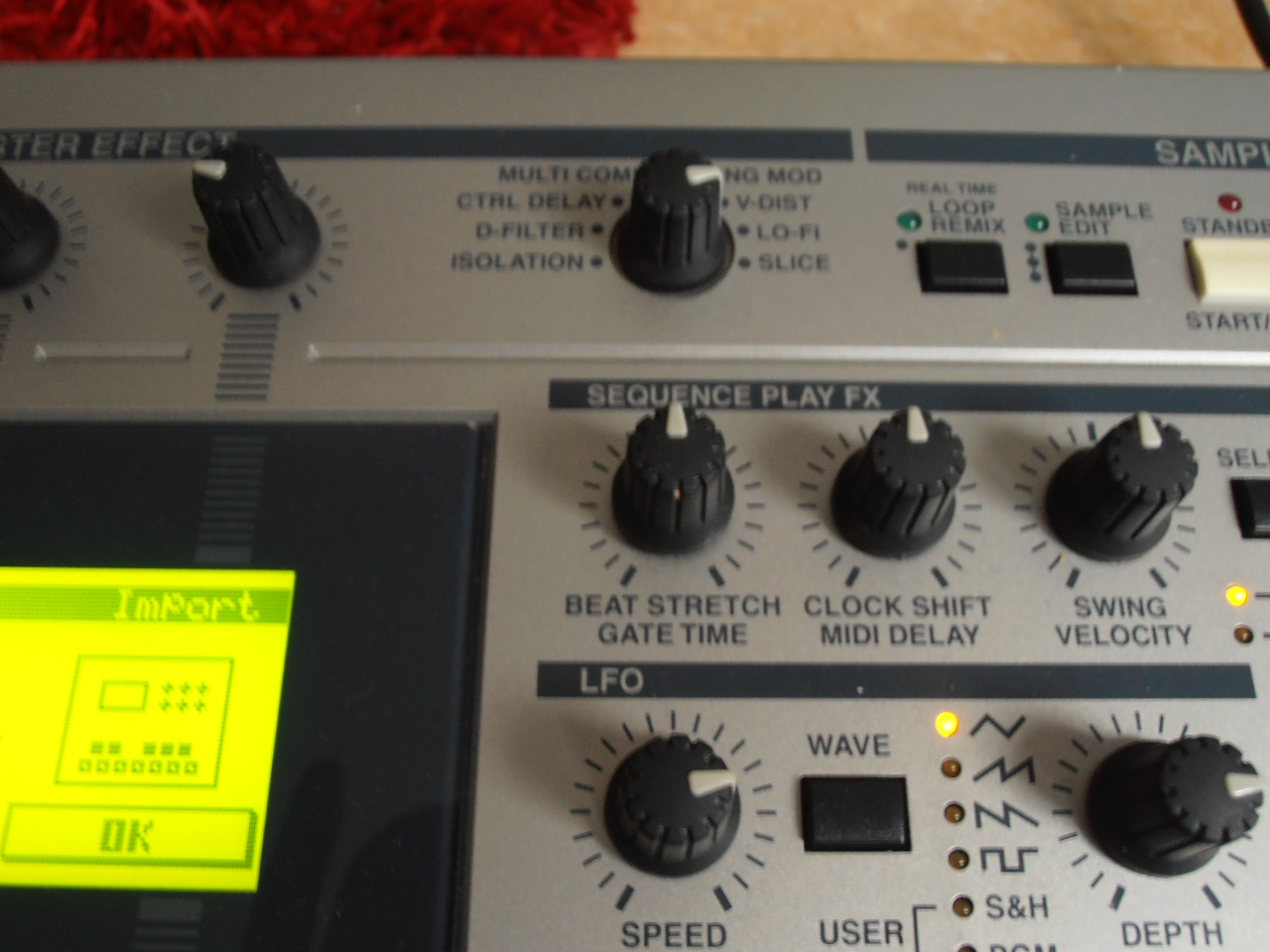Last year I got a Yamaha RS7000 Music Production Studio with very weak knobs – some encoders and most of them are pots /potentiometers. The repair of the knobs of a Yamaha RS 7000 is a very difficult thing and hard work, you have to dis-assemble the whole machine from the bottom to the front, pulling the PCB´s carefully out and than de- and re- solder the pots or encoders.
By the way, finding knob replacements is very hard too, you have to do some deep web search to find equivalent replacemnt potentiometers and encoders.
One simple trick / tip to let your Yamah RS 7000 knobs live longer
How do the knobs / pots /potentiometers live longer?

There is one simple hint I could not find in the manual so far, maybe its very hidden.
You just have to hold [SHIFT] while turning a knob to move in values of +/-10
So you can just „fly“ through the values with warp speed, without turning too much.
The complete list of Yamaha RS7000 Tips Tricks Tutorial Guide
Big thanks for this very usefull list of hints and tricks go to Phil Clendennin, aka „The Bad Mister“. Phil is a Yamaha professional.
Bad Mister’s RS7000 Tips:
Shortcuts:
-
Press [SHIFT]+[Fx] (Function buttons 1-4) to activate the numeric keypad via Sub-mode buttons – the numbers flash meaning you can enter data via buttons, press [ENTER] or [DO] to execute;
-
[OCT DOWN]+[OCT UP] = return to normal octave;
-
[SHIFT]+[UTILITY] to see available sequencer/sampler memory.
-
[SHIFT]+[MASTER] to return Master Effects to their default settings
-
Factory Reset: Hold [OCT DOWN]+[OCT UP]+[STORE] on power up
-
Autoload: Hold TRACK button 1…9, on power up to activate Autoloads 1-9. You create the auto loads by, literally, naming the file “autold1”, “autold2”, “autold3”, etc. Once executed the unit will automatically load the file every time, until you reprogram it to look elsewhere. Holding track 10 on power up will cancel any programmed auto load. You can also place an auto load file on a SCSI drive. This makes it easy to pick up where you left off if you ever have to stop mid-session. Simply create an Autoload file in a folder named for the project in question, power up and you are back where you left off.
-
Hold [SHIFT] while turning a knob to move in values of +/-10
-
Hold [TRACK SELECT]+[ALL] while changing a function to affect all tracks simultaneously
-
Hold [TRACK SELECT]+[1-8] while changing a function to affect the first 8 tracks
-
Hold [TRACK SELECT]+[9-16] while changing a function to affect tracks 9 through 16
-
Test Routine: [PATTERN]+[PATTERN CHAIN]+[UTILITY] on power up
-
Update Routine: [REC]+[STOP] on power up
If you find this usefull and like to share, just copy and paste this link:
http://info2info.de/infoblog/yamaha-rs7000-tips-tricks-tutorial-guide/
Comments are welcome!
Create your own custom drum kits with the Yamaha RS7000
RS7000 Custom Kits Tips:
You will naturally develop your own favorite drum sounds. The RS7000 will let you assemble and manage your own custom kits. Custom kits will be made from user samples and can be best assembled in a SAMPLE COMMON Program location. Individual samples that have been created in a Sample Local Program can be copied to a Sample Common program. The advantage is that Common programs can be accessed from all Patterns and Songs – not just the one they were sampled into. There are several ways in which you can get samples into a Sample Common Program: As mentioned they can be copied. Sample locations are number 001 through 128 and C001 through C128, where C is Common. Samples can also be imported directly into Sample Common programs (if you select the location in the mixer prior to importing). Even samples that have been Sliced into segments can individually be copied to a location within a Common Program Kit. The Sample Common Program can be named and stored as part of an ALL, a PATTERN or a SONG data file (.R2A, .R2P, or .R2S) and it can be loaded separately if you select LOAD, then select the “SMPL” as your load type and look in the “Common_Samples” folder.
The RS automatically keeps track of “Common_Samples”, “Pattern_Samples” and “Song_Samples” and lets you extract individual samples from within ALL, PATTERN, and/or SONG data files types. When a Pattern or Song has a phrase that points to a Sample Common Program – the RS will automatically associate the samples used with the Pattern they are used in. This way if you load the Pattern – you will load the samples.
The best way to archive your data is in ALL data files – because it is the most complete. It also lets you recover any portion of the data, for example, you can load a single Pattern from an ALL data file that contains 64 Patterns. You can load a single Song from an All data file that contains 20 Songs. You can recall any Local Sample (sample used within a  Pattern or Song) or any Common Sample program from an ALL data file. Rather than save each Pattern individually to SmartMedia card – save an ALL file – this way it will not duplicate the COMMON samples for each individual Pattern save.
Pattern or Song) or any Common Sample program from an ALL data file. Rather than save each Pattern individually to SmartMedia card – save an ALL file – this way it will not duplicate the COMMON samples for each individual Pattern save.
If you find this usefull and like to share, just copy and paste this link:
http://info2info.de/infoblog/yamaha-rs7000-tips-tricks-tutorial-guide/
